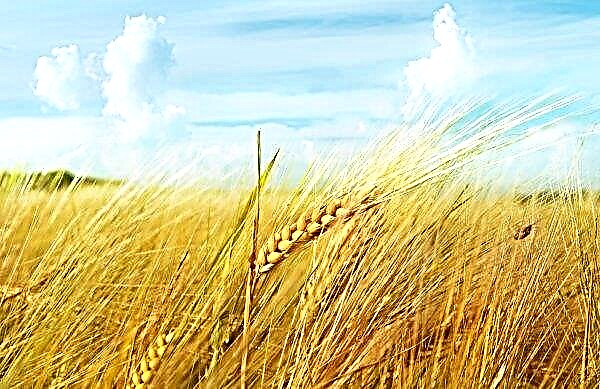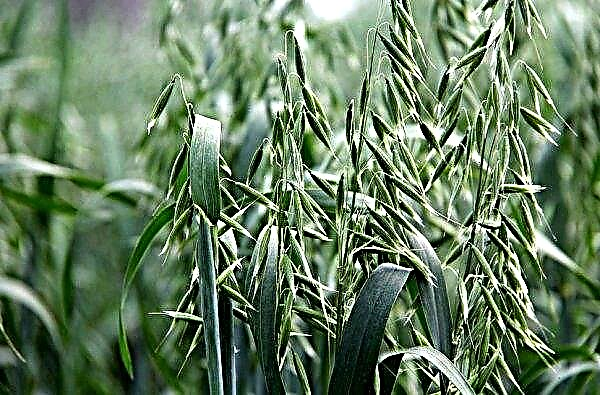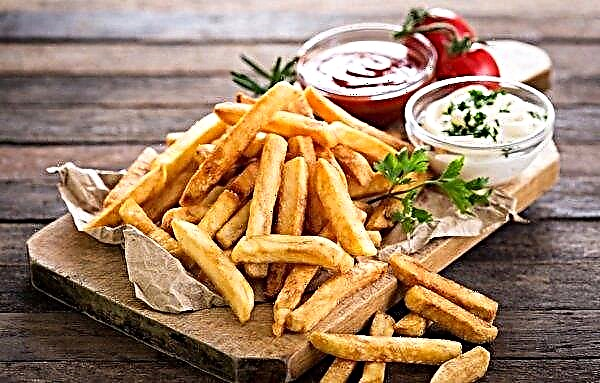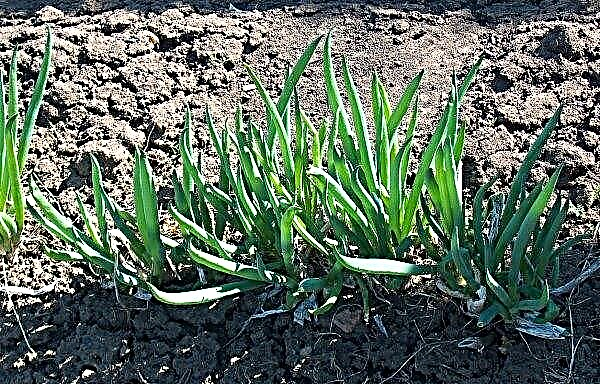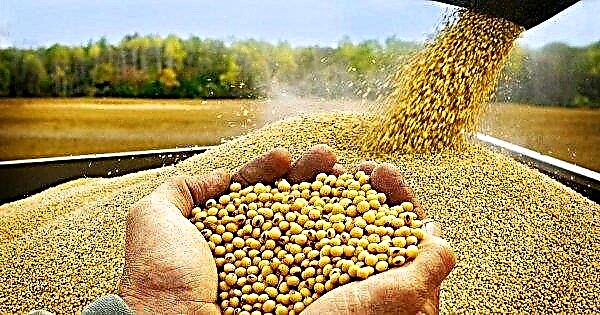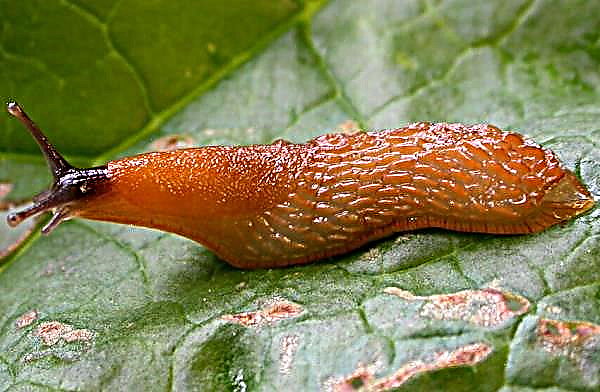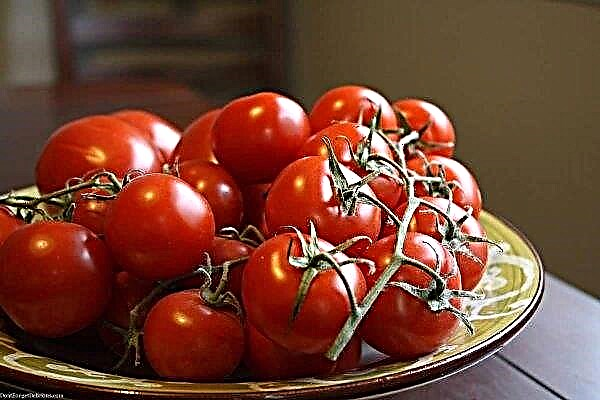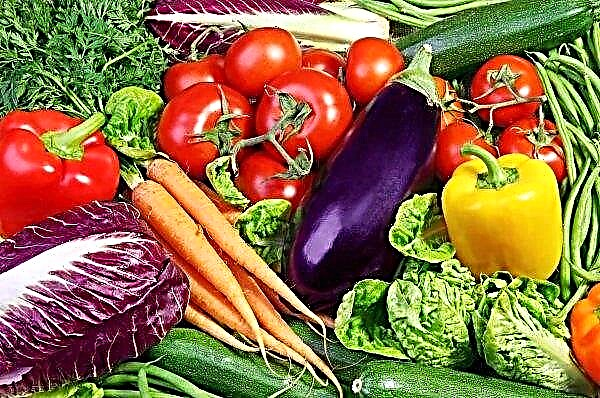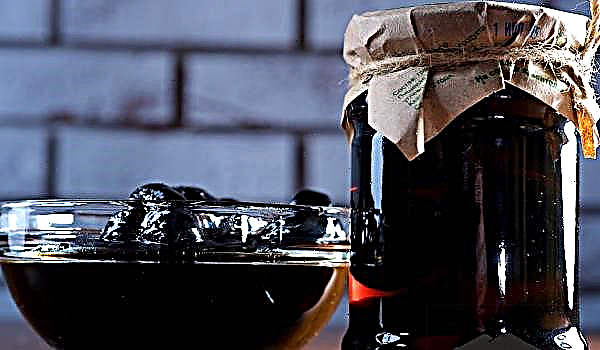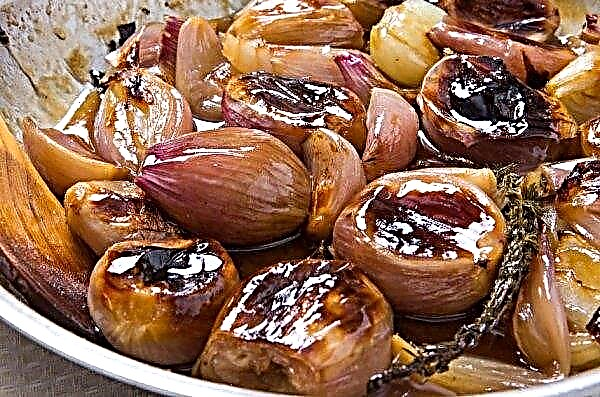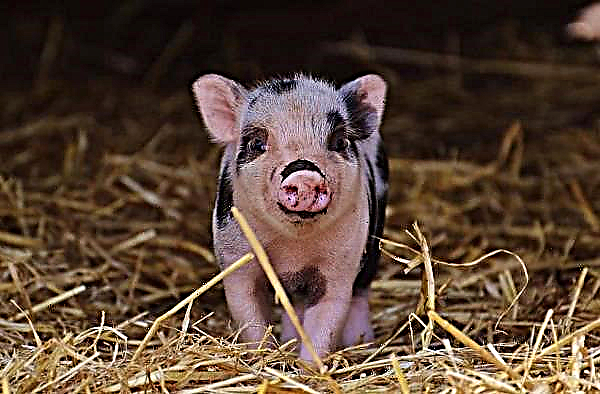Quail eggs, which made a serious competition for chicken, are now supplemented with quail meat, which, with the advent of the meat breed, the pharaoh quail becomes more and more competitive with respect to chicken products. Read more about the meat breed of quail pharaoh - later in the article.
Did you know? Quailing became the first living creatures born outside the Earth. It happened in 1990 at the Mir space station.
Breed description
Quail, whose meat is superior to chicken in all conditions, for a long time could not compete with chickens, since the average weight of ordinary quail does not exceed 150 g, which makes the meat direction of breeding of this bird insufficiently profitable. The American breeder A. Marsh managed to breed the pharaoh quail breed, the weight of the females of which is almost 2 times the average weight of wild quail. In addition, meat quails are characterized by early maturity, in which males, having reached the age of only 1.5 months, are already ready for reproduction, and females begin to lay eggs at the age of 40 days.
Appearance
With a serious increase in body weight compared to wild quails, individuals of the pharaoh breed practically do not differ from them in the color of plumage. It is also mottled, it has the same brown tint on feathers, diluted with white and black blotches. The only exception is the Texas quail, which also belongs to the meat quail breed Pharaoh, but at the same time have a snow-white color. All quails of this line have a dense and squat body with wings tightly adjacent to it.
Did you know? With rare exceptions, quail eggs do not cause allergic reactions in humans.
Differences between a female and a male
The quail female is very easy to distinguish from the male, because it is much larger than him. In addition, the color of the plumage of the female is more variegated than that of the male, but the “mask” on the head is more pronounced in the male.
Productivity Characteristics
On average, an adult quail gains weight by a quarter of a kilogram, and quail is 100 g heavier and sometimes reaches a weight of 400 g. Egg-laying quail is small, productivity during the year is 120 eggs. However, when the quailing of the Pharaoh breed begins to fly, it is immediately evident that their eggs are noticeably larger than that of quail eggs.
Important! An insufficient length of daylight should not be replaced by bright lighting, since an excessive amount of light scares quails and excites aggressiveness in them.
Since, in terms of each quail head, quite modest expenses are required for its maintenance (even taking into account the increased attention that the pharaoh requires when growing it), breeding this bird is a profitable occupation - its profitability reaches 200%. The French line of quail pharaoh breed is especially productive, whose representatives on average demonstrate live weight reaching 400 g.
Features of meat products
High productivity indicators look especially impressive against the background of the unconditional value of quail meat in both gastronomic and dietary terms. Possessing good taste, it practically does not contain cholesterol, but at the same time it is rich in easily digestible protein and many nutrients valuable to human health. The only drawback of quail meat is its appearance: due to the dark color of the feathers of the bird, it also acquires a dark shade, which not everyone likes.
Advantages and disadvantages of the breed
Everything described above allows you to highlight the main positive qualities of this quail breed, as well as some of its shortcomings.
- The advantages most often include:
- high consumer qualities of meat;
- more meat on each carcass compared to other breeds;
- large egg size;
- fast puberty of quail and quail.
- Among the disadvantages that are much less significant than the advantages include:
- increased demands on conditions of detention;
- instability to changes in the environment;
- modest egg production;
- ineffective appearance.
Prerequisites for maintenance
The increased dimensions of the birds of this breed require large areas for placement in comparison with other breeds of quail. In addition, the pharaohs need more strict adherence to temperature and humidity conditions, as well as the arrangement of effective ventilation with the simultaneous exclusion of drafts.
Room requirements
In the sparrowhook, in which the pharaohs are raised, at least 0.02 m² of area should be for each individual. The room temperature must be between + 18 ° C and + 22 ° C. Of particular importance is the stability of the temperature regime. His fluctuations with going beyond the optimal indicators in one direction or another quickly affect the health of the birds. Like all other quails, the pharaohs are demanding on the length of daylight hours, which should be at least 16 hours. Of great importance for quail is the humidity of the ambient air, the optimal rate of which is within 65%. With low humidity, birds begin to thirst and lose their appetite, and when the level rises above 75%, they experience even greater discomfort, which can lead to disease.
Like all other quails, the pharaohs are demanding on the length of daylight hours, which should be at least 16 hours. Of great importance for quail is the humidity of the ambient air, the optimal rate of which is within 65%. With low humidity, birds begin to thirst and lose their appetite, and when the level rises above 75%, they experience even greater discomfort, which can lead to disease.
The accelerated metabolism characteristic of a quail organism requires a constant influx of fresh air. Therefore, the air exchange in the quail in summer should be at least 5 m³ / h, and in winter - 2 times less active. At the same time, it is necessary to exclude drafts that act on the pharaohs exclusively negatively, in some cases - even to death.
Important! It is not recommended to place more than 6 birds on 1 m², because otherwise it can lead to slower weight gain and lower egg production.
Cells
Quails are kept in cages made of wood or galvanized metal, and the chicks spend the first 2 weeks of their existence in brooders, which are wooden and cardboard boxes with a mesh top.
For chicks
The temperature in the room where the brooders are located should be within + 30 ° ... + 35 ° C. Over the course of 2 weeks, it is gradually lowered to + 25 ° C. Also, during the first 2 weeks in the quail with brooders, round-the-clock lighting is maintained, which is then shortened to 17 hours. When the chicks reach 2 weeks of age, they are transferred to cells with adult birds.
For adult quail
As already mentioned, the minimum area that is allocated for 1 adult quail of the Pharaoh breed is 0.02 m². At the same time, the height of the cage should be at least 0.3 m. The rods of the cage are spaced from each other at a distance that allows only the head of the bird to stick out. Quail should be able to stick their head out. Because feeders and drinking bowls are fixed on the outside of the cage. This, in turn, is done so that the birds in the process of eating and drinking do not fill up with food and do not fill the floor of the cage with water. The top of the cage is often covered with a mesh of soft material, and the floor is made inclined to roll eggs into a specially adapted tray.
Because feeders and drinking bowls are fixed on the outside of the cage. This, in turn, is done so that the birds in the process of eating and drinking do not fill up with food and do not fill the floor of the cage with water. The top of the cage is often covered with a mesh of soft material, and the floor is made inclined to roll eggs into a specially adapted tray.
What to feed
Quail livestock is fed 3-4 times during the day at the same time. In winter, sprouted wheat and millet grains are introduced into the diet of birds, which are replaced with fresh grass in the summer.
Various vegetables are also added to the feed:
- cabbage leaves;
- grated beets;
- chopped carrots.
All year round feed should be enriched:
- crushed eggshell;
- river sand;
- common salt;
- limestone;
- in chalk.
 In the first 2 weeks of life, chickens are fed a chopped boiled egg, which must be added to the feed and to the females, because they spend a lot of nutrients to form eggs.
In the first 2 weeks of life, chickens are fed a chopped boiled egg, which must be added to the feed and to the females, because they spend a lot of nutrients to form eggs.Little chicks
The diet of chicks up to 2 weeks of age contains such products (in percentage terms):
- corn - 40;
- wheat - 9;
- soybean meal - 35;
- fish meal - 5;
- meat and bone meal - 3;
- fodder yeast - 2;
- dry return - 3;
- grass meal - 1;
- shells, chalk - 1;
- premix P5-1 - 1.

Adult quail
For adult birds, the diet (also in percentage) is as follows:
- corn - 41;
- wheat - 13;
- sunflower meal - 13;
- soybean meal - 13;
- fish meal - 5;
- meat and bone meal - 4;
- feed yeast - 4;
- grass meal - 2;
- shells, chalk - 4;
- premix P1-1 - 1.

Useful Quail Content Guidelines
Experienced poultry farmers give such recommendations:
- Large quail cages are useful to divide with plywood partitions into sections. This allows you to separate young individuals from older adults, as well as to plant especially pugnacious birds.
- Drinking bowls are best used nipple drinkers that minimize water splashing and leave it clean for a long time.
- Do not fill the feeders to the top, as this leads to the spread of food on the sides. Part of it falls on the floor of the cage.
- The optimal deadline for slaughtering quail of the Pharaoh breed for meat occurs when the birds reach the age of 6 weeks.
So, growing quail pharaoh breed at home is much more difficult than quail egg. However, the abundance of high-quality meat and large eggs that these birds give fully justify the effort.


